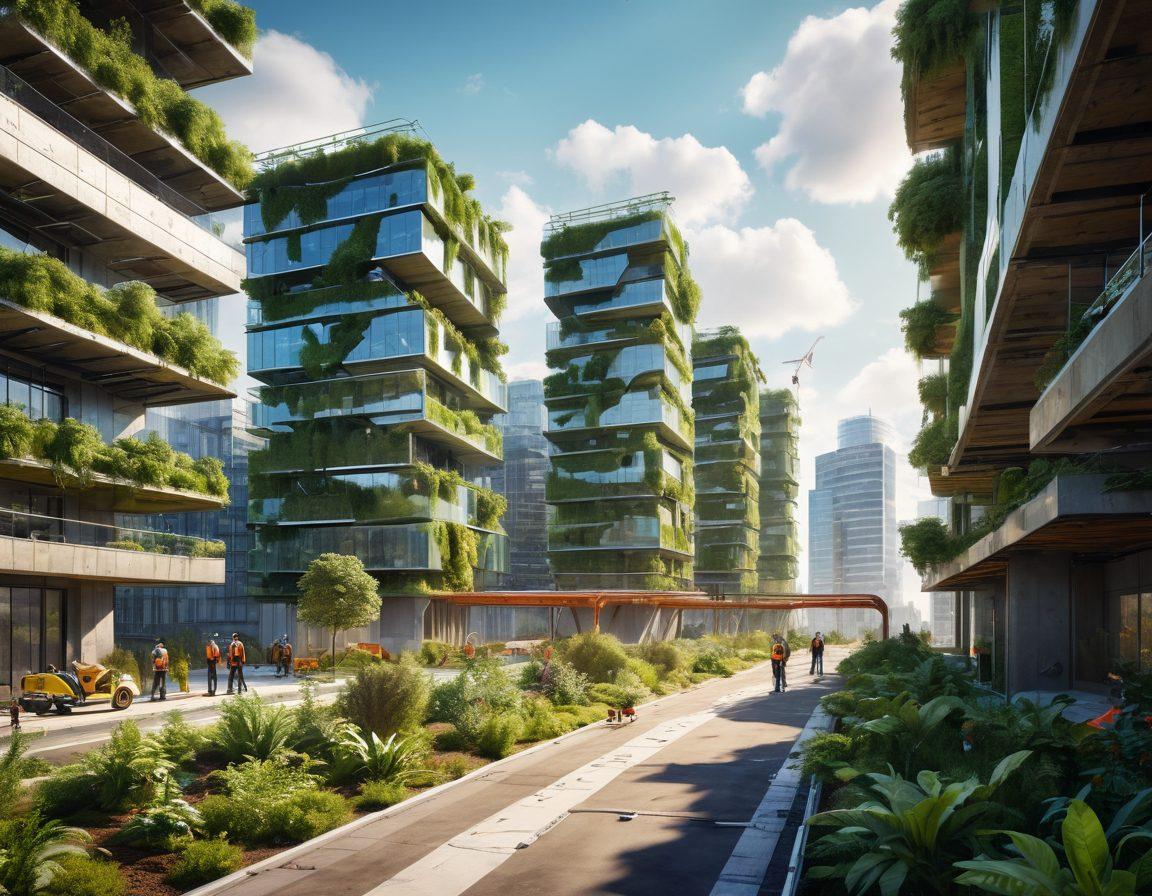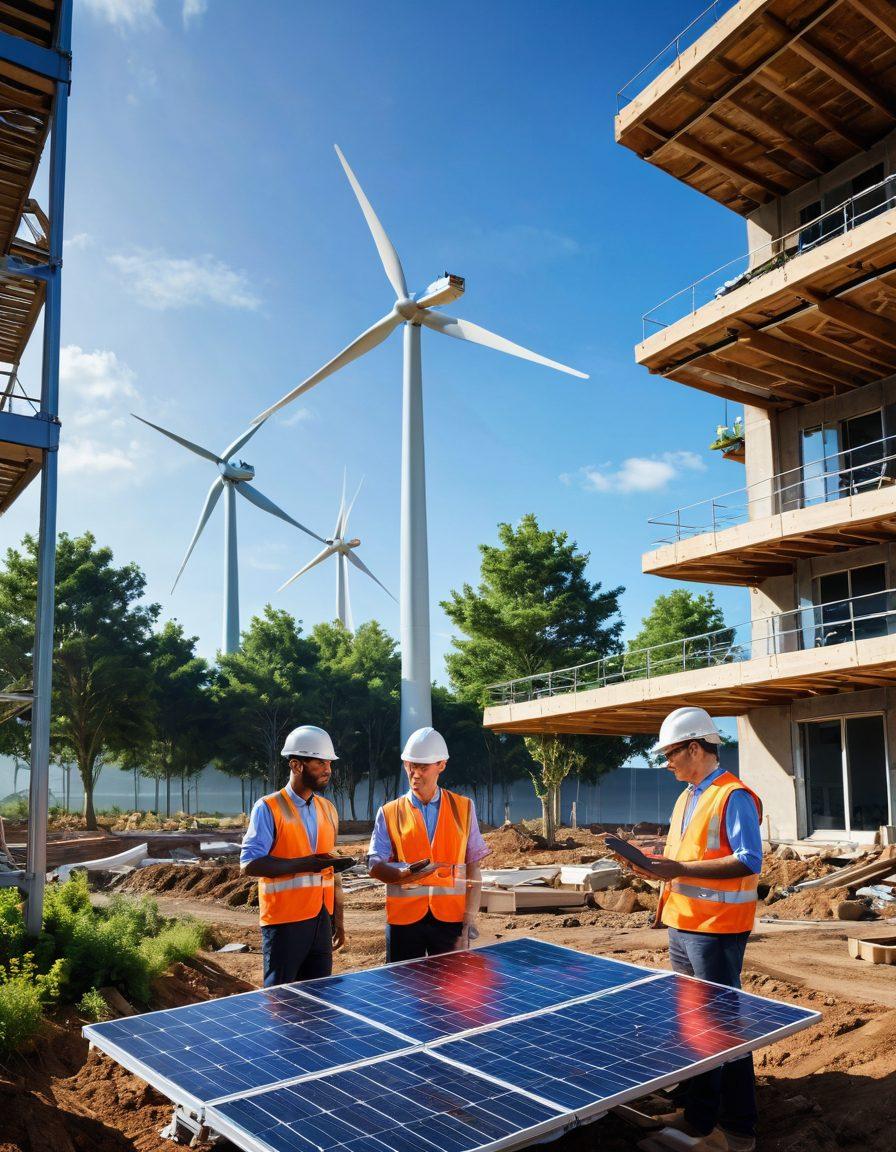Revolutionizing Construction: The Role of Chemical Solutions in Building Sustainable Infrastructure
In the face of climate change and resource scarcity, the construction industry stands at a crossroads, where the decisions made today will shape the cities of tomorrow. Imagine a world where our buildings breathe as they stand tall, where the very materials they are constructed from inspire innovation and sustainability. This is not merely a dream but the emerging reality, driven by the rapid advancement of chemical solutions in construction. What role do these solutions play in the quest for sustainable infrastructure? Let’s dive in and explore this transformative journey.
As the adage goes, 'you can't build a great building on a weak foundation.' In the realm of sustainable construction, this foundation is rooted in chemistry. Construction chemistry focuses on developing and applying chemical engineering techniques that create environmentally friendly materials and efficient building products. For instance, consider how composite materials have revolutionized the way we think about strength and durability. With innovative construction solutions tied to material science, we can create structures that use less energy, withstand harsh environments, and have a reduced environmental footprint.
When we think of chemical solutions, one might visualize laboratories filled with beakers and bubbling concoctions. However, the impact of these substances stretches far beyond the lab. Advanced construction techniques leverage engineering materials that optimize performance while minimizing waste. Have you ever wondered how certain concrete feels more like a steel structure and less like a fragile shell? That's structural chemistry at work! These advancements lead to construction products that not only look good but also promise longevity and resilience. It's the fusion of artistry and science that breathes life into sustainable infrastructure.
Yet, the magic of chemical solutions doesn’t stop at enhancing building materials. It's also about the complete transformation of construction services. Imagine construction technology that employs smart materials capable of responding to their environment. Buildings that can self-heal, collect solar energy, or purify air are no longer whimsical concepts but actionable ideas thanks to construction innovations. Are we ready to embrace a future where our infrastructure can adapt and respond to our ever-changing world? The answer lies in the continued collaboration between material scientists, chemical engineers, and architects.
As we stand on the cusp of this exciting new era, the call-to-action is clear: we must champion sustainable construction and support the push for environmentally friendly materials. By embracing construction solutions rooted in chemical engineering, we are not only reimagining our skylines but also ensuring a healthier planet for future generations. The potential is boundless, and the time for transition is now. Are you ready to be a part of this vital movement towards a brighter, more sustainable future?
Innovative Building Materials: The Chemistry Behind Eco-Friendly Construction
In a world where urban sprawl meets environmental challenges, the intersection of construction chemistry and sustainable construction has never been more critical. The traditional building materials that have served us for decades are now being reevaluated as we search for innovative solutions to meet the demands of modern infrastructure. This is not just a change in materials; it's a revolution in construction innovation! Can we rebuild our cities in a way that honors the planet? With the rise of eco-friendly construction materials, the answer is a resounding yes.
Imagine walking through a city where every building, every road, and every bridge showcases not only structural integrity but also environmental responsibility. This dream is becoming a reality through the marvels of material science and engineering materials that prioritize sustainability. Think of chemical solutions that break the mold—literally and figuratively! Innovations like recycled concrete, bio-based plastics, and self-healing materials are paving the way for an eco-conscious future. What if the very materials we build with could repair themselves?
Quotes often inspire action, and one particularly striking statement resonates in our quest for sustainable construction: 'The greatest threat to our planet is the belief that someone else will save it.' As professionals in construction and chemical engineering, we have the power to challenge the status quo. By embracing advanced construction techniques and chemical products designed with the environment in mind, we can influence the future of our cities. Just as chemistry transforms simple compounds into groundbreaking materials, our choices can transform our impact on the Earth.
But how do we harness the potential of these innovative building materials? It begins with collaboration—architects, engineers, and construction services must unite to explore cutting-edge construction technology. For instance, Ductal® concrete utilizes ultra-high-performance categories to minimize waste and extend building longevity. Simultaneously, the introduction of environmentally friendly materials ensures that we are making responsible choices for our infrastructure solutions. Have you considered how your next project can benefit from these advancements?
Ultimately, the path forward in construction lies in our willingness to embrace change. Each building material we select tells a story—the story of how we approach our responsibility to future generations. By investing in chemical solutions that champion sustainability, we are not just constructing; we are crafting a legacy. The future of construction relies on our commitment to a greener world, and it starts with the innovative, eco-friendly building materials we choose today. Shall we be the architects of this new era together?
Engineering the Next Generation: The Impact of Construction Chemistry on Sustainable Solutions
In the world of construction, innovation doesn't just come from new tools and machinery; it emerges from the chemical compounds and processes we use to create buildings that can stand the test of time. The evolution of construction chemistry is a fascinating story, one that intertwines material science with engineering ingenuity. As we face increasing environmental challenges, it's clear that sustainable construction solutions must be a significant focus. How do these chemical innovations truly revolutionize our infrastructure and contribute to a greener future?
At the heart of construction chemistry lies a synergy between chemical engineering and advanced construction practices. By harnessing the power of chemical solutions, we are able to develop environmentally friendly materials that go beyond traditional building products. For instance, the creation of greener concrete mixes through specific additives demonstrates how chemical products can enhance not only the durability of structures but also their sustainability. Imagine a world where our buildings not only serve us but also preserve the environment—what an incredible shift that would be!
Consider the impact of structural chemistry on our urban landscapes. By understanding how various elements interact on a molecular level, engineers are crafting building materials that are lighter, stronger, and more energy-efficient than ever before. These innovations don’t just improve the construction process; they redefine our expectations of what construction products can achieve. Think about it: if we can create materials that reduce energy consumption, what does that say about the future of construction technology?
Moreover, construction chemistry offers vast potential for infrastructure solutions that are not only functional but also attractive. The incorporation of advanced engineering materials has led to aesthetically pleasing structures that still prioritize sustainability. It's a balance of beauty and responsibility—an idea that resonates in our communities. Have you ever marveled at a modern structure and wondered how it was engineered to be both visually stunning and environmentally conscious?
As we move towards a more sustainable future, the role of chemical solutions in construction becomes increasingly essential. It’s not just about choosing the right construction solutions; it’s about committing to a mindset of sustainability from the ground up. We need to challenge ourselves: Are we ready to embrace these changes and advocate for the use of advanced materials in our construction projects? By engaging with the innovation that construction chemistry offers, we can collectively build a future where our infrastructures are as strong as they are sustainable.


